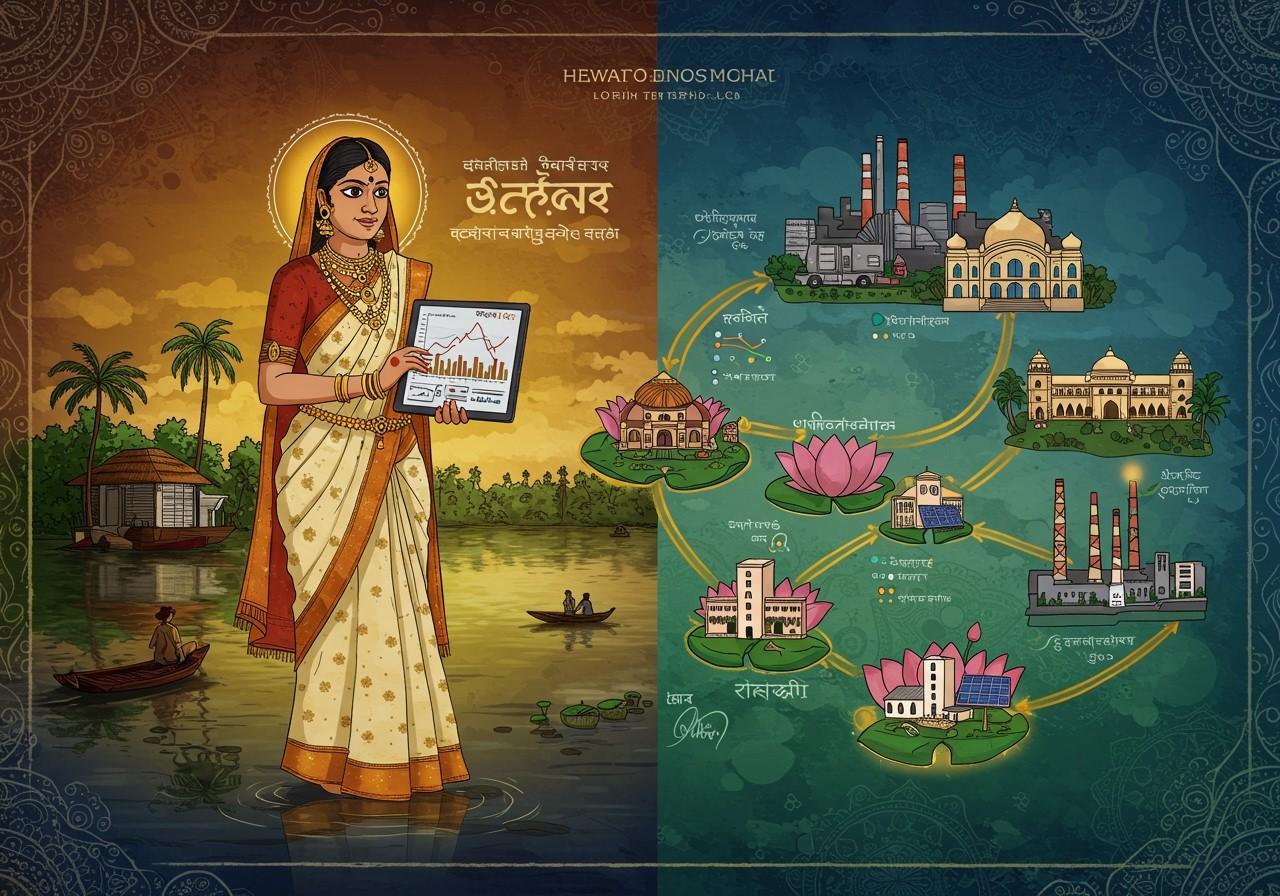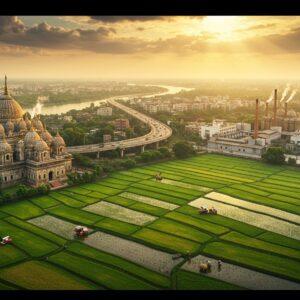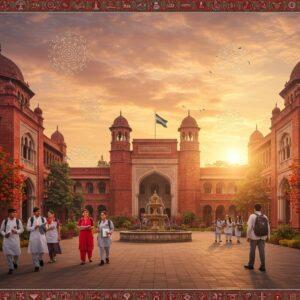
Kerala, often called “God’s Own Country,” stands out among Indian states for its unique development model. This blog post offers a detailed socio-economic comparison of Kerala with other major Indian states like Gujarat, Maharashtra (Mumbai), and Tamil Nadu in 2024. We’ll explore healthcare, education, economic growth, and quality of life to understand how Kerala compares.
Kerala vs. Gujarat: Socio-Economic Indicators
Economic Growth
Kerala’s economy is driven by the service sector, including tourism and IT, while Gujarat’s strength lies in industrial growth, particularly manufacturing and trade. Kerala’s GDP growth is steady, but Gujarat’s industrial sector fuels faster economic progress. For insights into the dynamics of Dravidian and Nagara architecture, explore this comparative study: Dravidian and Nagara Architecture.
Healthcare
Kerala excels in healthcare, with extensive medical facilities, low infant mortality, and high life expectancy. While Gujarat is improving, it still trails Kerala in some health outcomes. If you’re interested in delving deeper into Dravidian temples, this guide is a valuable resource: Dravidian Temples: A Guide to Their Key Architectural Features.
Education
Kerala boasts India’s highest literacy rate, thanks to substantial government investment in education. Gujarat is making progress, but it hasn’t yet reached Kerala’s educational achievements. For those intrigued by the historical context of Dravidian architecture, this exploration of South India’s ancient temples provides valuable insights: Exploring Dravidian Architecture: South India’s Ancient Temples.
Employment
Kerala faces higher unemployment, especially among educated youth. Gujarat offers more diverse job opportunities due to its industrial base. To understand the role of Dravidian temples in Hindu rituals, this resource offers valuable insights: Dravidian Temples: Their Role in Hindu Rituals.
Rural vs. Urban Development
Kerala focuses on balanced rural and urban development. Gujarat’s development is more urban-centric, resulting in disparities between rural and urban areas. For a glimpse into how Dravidian architecture has evolved, this look at modern designs and interpretations is fascinating: Modern Dravidian Architecture: New Designs and Interpretations.
Women Empowerment
Kerala leads in women’s workforce participation and political representation. Gujarat is improving but needs to do more to empower women. As of 2024, Kerala continues to hold a strong position in gender development.
Environmental Sustainability
Both states have environmental conservation initiatives, but Kerala’s focus on sustainable development and eco-tourism is more pronounced. This aligns with the state’s overall commitment to balanced development.
Kerala vs. Mumbai (Maharashtra): Quality of Life and Urban Development
Cost of Living
Mumbai’s cost of living is significantly higher than in Kerala’s major cities like Kochi and Thiruvananthapuram. This difference is a key factor for those considering living in either state.
Housing and Infrastructure
Kerala offers better housing quality and urban planning. Mumbai grapples with overcrowding and inadequate infrastructure, impacting residents’ quality of life.
Public Services
Kerala’s public services, such as sanitation and water supply, are generally better managed than Mumbai’s. This contributes to a higher standard of living in Kerala.
Safety and Crime Rates
Kerala is considered safer, with lower crime rates than Mumbai, improving residents’ quality of life. This is an important factor for individuals and families.
Cultural and Recreational Opportunities
Both regions are culturally rich, but Kerala’s emphasis on traditional festivals and arts makes it unique. This offers residents and tourists a vibrant cultural experience.
Migration and Population Density
Mumbai experiences high population density and significant migration, affecting its urban development. Managing this influx is a continuous challenge for the city.
Economic Opportunities
Mumbai offers vast job opportunities and a dynamic business environment. Kerala provides a more balanced approach, with opportunities in both urban and rural areas.
Kerala vs. Tamil Nadu: Development Models and Outcomes
Kerala and Tamil Nadu Map – Geographical and Cultural Insights
How Poojn.in Serves Different Regional Needs
Poojn.in caters to diverse ritual needs across India, including Kerala and other regions. Poojn.in recognizes the importance of regional specificity in spiritual practices.
- Kerala-Specific Items: Poojn.in offers traditional Kerala-style brass lamps (Nilavilakku), pure copper items for temple rituals, authentic Kerala sandalwood products, and special Kerala puja items like Ela Thali. These items cater specifically to the traditional practices of Kerala.
- North Indian Items: Poojn.in provides marble pooja thalis, brass aarti sets, complete Navgraha sets, and traditional Ganesh idols. These items are essential for various North Indian ceremonies and rituals.
- Universal Products: Poojn.in also offers universal products like premium incense sticks (like Swarna Lavender Agarbatti), pure ghee for rituals, copper kalash sets, and puja bell sets. These products are used in various rituals across different regions and traditions.
Poojn.in maintains the authenticity of regional traditions while offering pan-India delivery. Detailed product descriptions in multiple languages and region-specific buying guides are available. All items are quality-certified and packaged appropriately for sacred items. Visit poojn.in or download our app to explore our complete range.
Conclusion
Kerala excels in healthcare, education, balanced development, women’s empowerment, and environmental sustainability. However, states like Gujarat and Maharashtra shine in industrial growth and economic opportunities, while Tamil Nadu boasts a strong industrial base and effective social programs. Each state has its strengths, reflecting India’s diverse socio-economic landscape. Understanding these differences helps appreciate each state’s achievements and encourages mutual learning for balanced and inclusive development across India.


